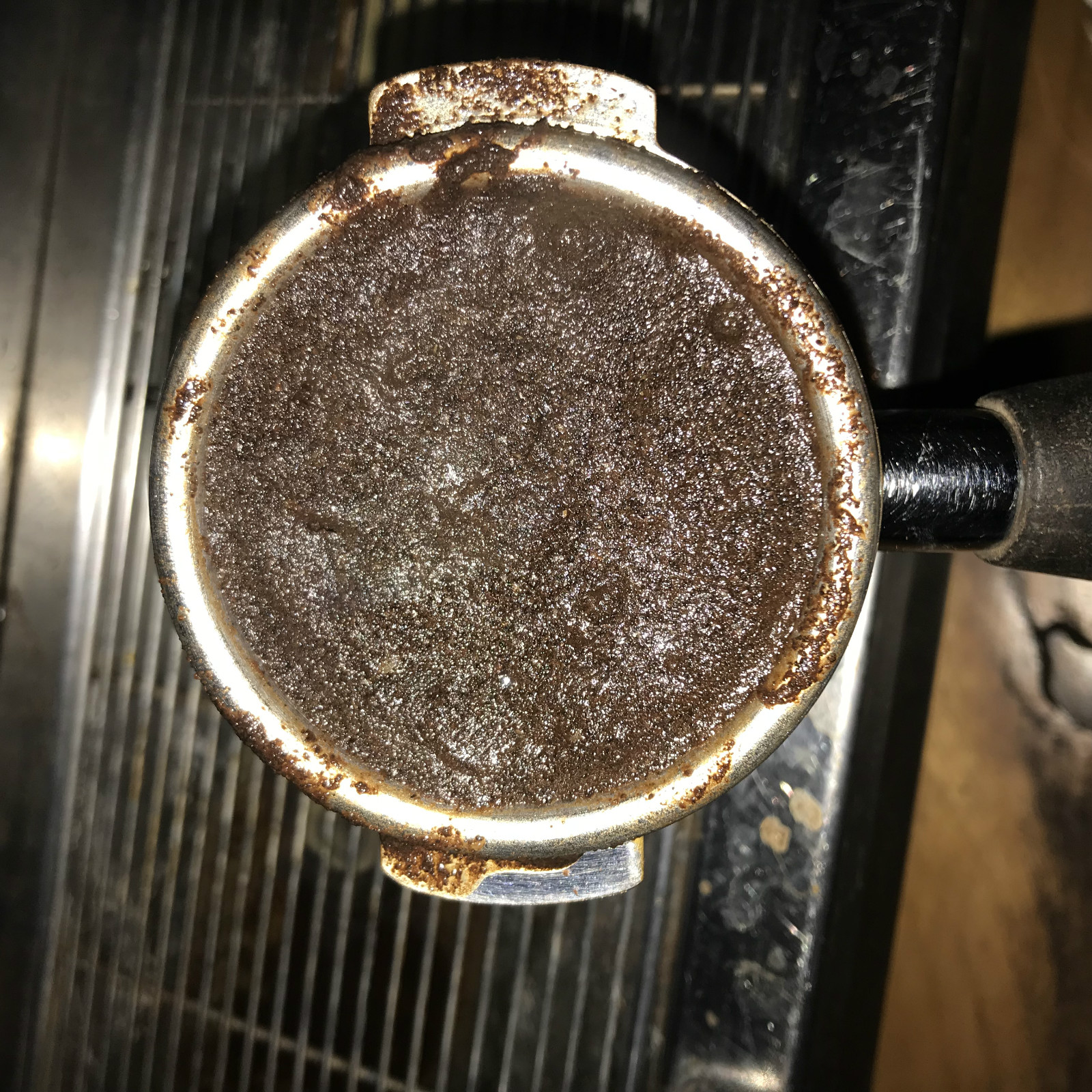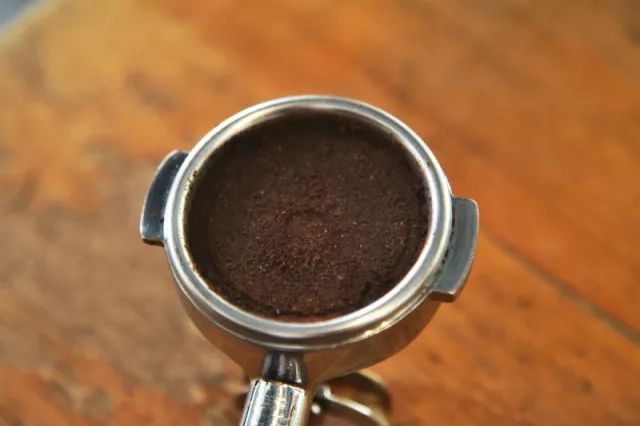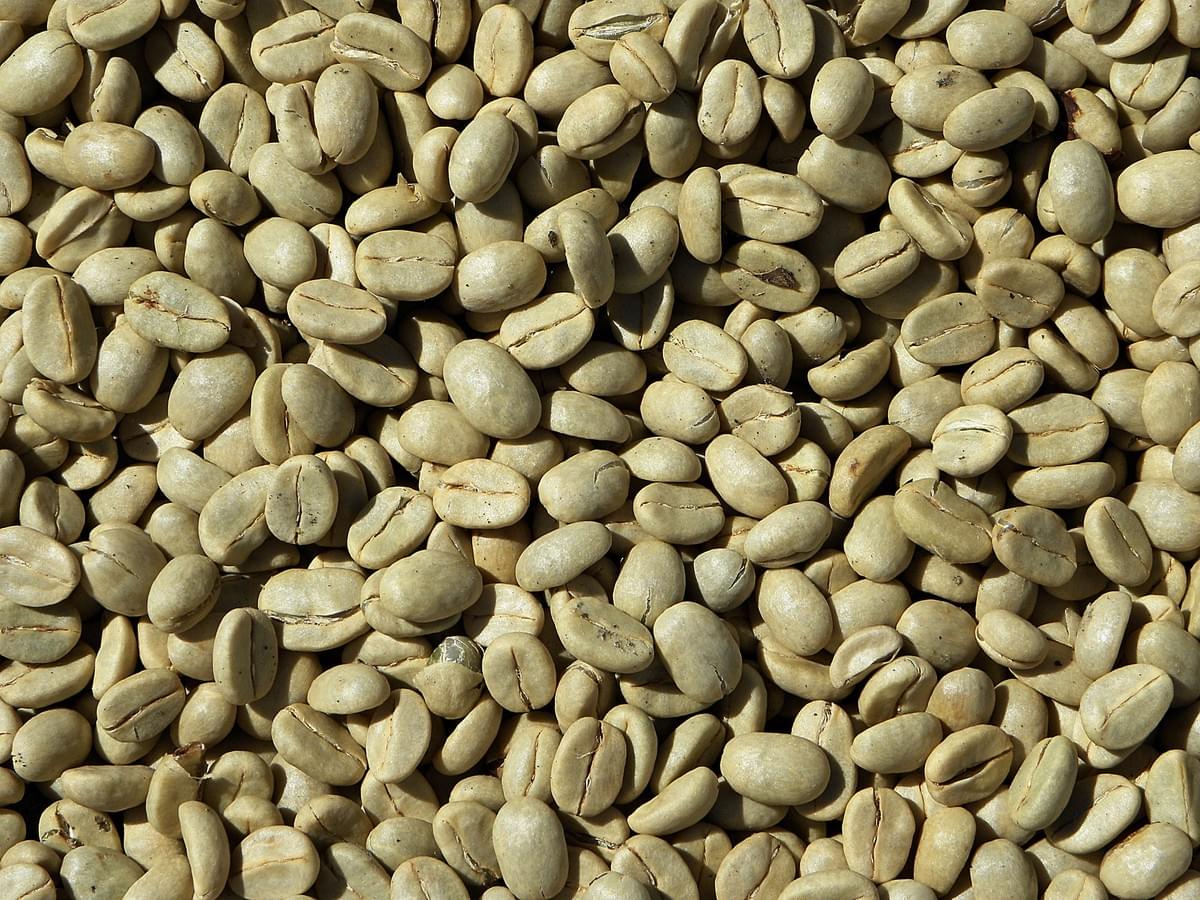Why does the coffee brewed by the Italian coffee machine have stagnant water on the surface of pressed powder?
Professional coffee knowledge exchange more coffee bean information please follow the coffee workshop (Wechat official account cafe_style)
Have you ever tried to buckle the handle to observe the coffee pressed powder after Espresso extraction? Have you ever given up the brewing plan at that time because the surface water of coffee pressed powder was muddy? Why on earth is there stagnant water on the surface of pressed powder after brewing coffee with an Italian coffee machine? Is this situation good or bad?
Don't be afraid, I'll tell you first: coffee pressed powder is too wet and stagnant, it doesn't matter at all!

Pressed powder stagnant water, the residue wet sticky. The biggest culprit is the amount of powder!
No matter whether the coffee machine has a pressure relief valve or not, don't think that you have taken the standard 7g powder or 14g powder and filled it perfectly. After cooking the machine, I will certainly give you a beautiful pressed powder ~ No! The design of the water distribution network of each coffee is different from that of the powder bowl, and the distance depends on the amount of powder brewed into a "beautiful" coffee pressed powder.
Generally speaking, when you have finished filling the coffee powder and injecting water into the head to pressurize the coffee, the coffee pressed powder still expands a little after contacting the hot water. If the powder is grasped properly, the extraction will expand close to the water distribution network; when the extraction is stopped, the coffee machine will be able to absorb the excess water through the pressure relief valve, so that the pressed powder is not too wet and muddy.
Insufficient amount of coffee powder, the degree of expansion in the extraction process will not be enough, the gap between pressed powder and the water diversion network is too large, there will be stagnant water. Although there is a smoothing action in the cloth powder stage, it does not necessarily mean that your powder bowl is suitable for this. If you have seen the specifications of different coffee powder bowls, which are also used to make Double Espresso, there are more than 14g, 15g, 16g and 17g portions. Coffee beans (powder) with different roasting degrees have different densities, the grinding thickness of coffee powder will also affect the volume of the powder, and whether there is a tapping action in the powder process will also affect the true capacity of the powder bowl. So: smoothing the powder bowl does not necessarily mean that there is enough powder.
Of course, too little powder is not necessarily a bad thing, but too much powder is certainly not a good thing. If the amount of powder is too much, the filled pressed powder is easy to be too thick and too dense, and it is easy to crack and deform when touching the water diversion network on the head (especially a screw in the middle of some types of water distribution network), coupled with the expansion of water absorption, the extraction flow rate will become very unstable.

In addition, stagnant water may also be due to the lack of freshness of coffee beans.
There are two reasons, one is that, as mentioned above, the expansion of coffee pressed powder after contact with hot water has a lot to do with the freshness of coffee beans (powder). The fresher the coffee beans (powder), the greater the expansion after absorbing water. When the coffee beans are not fresh (that is, the absorption and exhaust reaction is not obvious), the expansion of the coffee pressed powder will become worse, so that the gap between pressed powder and the water diversion network is too large, residual stagnant water.
Second, we all know that when espresso is extracted, the brewing head will press the water in the powder bowl to pass through the coffee pressed powder at about 9Bar pressure, while the gas (mainly carbon dioxide) released by the coffee powder absorbing water will be compressed and wrapped in oil to form Crema flow. The moment the Espresso extraction stops, the boiling head stops the output pressure and then opens the pressure relief valve. At this time, before the compressed gas in pressed powder (because the liquid solid is relatively difficult to compress) is discharged from the powder bowl, it expands rapidly to form a reverse pressure, forcing the superfluous water in the upper layer to "recoil" and discharge through the pressure relief valve.
So, if the gas accumulated in the coffee pressed powder is not much (not fresh, lightly roasted), seriously overextracted (most of the gas is discharged from the powder bowl), and there is a gap between the pressed powder and the water diversion network (too little powder), in these cases, stagnant water will remain.
Even from the above analysis, we can reverse another unexpected situation of pressed powder-- pressed powder can not come down on the water distribution network because of too much powder + coffee beans (powder) too fresh + insufficient extraction …...

But even if there is stagnant water left, it does not mean that this is a failed cooking.
Among the complex factors affecting Espresso extraction, the ratio of powder to water, grinding degree, pressure, water temperature and so on. But the general principle is, of course, to pursue a "slow and smooth" extraction process to achieve a more balanced coffee flavor within a safe range. The "powder amount" and "freshness" mentioned above are not the only determinants in espresso extraction. The "beautiful" of pressed powder does not mean that Espresso is necessarily delicious, and the "stagnant water" of pressed powder does not necessarily mean that Espresso is bad.
No matter what the extraction conditions are, it's good to drink it in the end, isn't it? So we often hear the saying "beans are good, whatever tastes good". The editor thinks that "in a good mood, everything in the world is good." .
END
Important Notice :
前街咖啡 FrontStreet Coffee has moved to new addredd:
FrontStreet Coffee Address: 315,Donghua East Road,GuangZhou
Tel:020 38364473
- Prev

"good coffee" & "good coffee"-what is a good cup of coffee?
Professional coffee knowledge exchange more coffee bean information please follow the coffee workshop (Wechat official account cafe_style) how to define a good cup of coffee? Some people say: to be strong, mellow and bitter; others say: to be refreshing and sweet; others say: if not sour, not bitter, not astringent, usually old gluttonous coffee lovers will say that XX brand, XX coffee is good; gourmet coffee love
- Next

How does the moisture content of raw beans affect coffee roasting? How to bake coffee with high / low moisture content?
Professional coffee knowledge exchange more coffee bean information Please pay attention to the coffee workshop (Wechat official account cafe_style) in every stage of the coffee industry chain must reduce the moisture content of raw beans to avoid moldy beans caused by defects and defects, proper preservation can even improve the value of raw beans. Ensuring proper drying of beans is important to optimize their quality potential and minimize them.
Related
- Beginners will see the "Coffee pull flower" guide!
- What is the difference between ice blog purified milk and ordinary milk coffee?
- Why is the Philippines the largest producer of crops in Liberia?
- For coffee extraction, should the fine powder be retained?
- How does extracted espresso fill pressed powder? How much strength does it take to press the powder?
- How to make jasmine cold extract coffee? Is the jasmine + latte good?
- Will this little toy really make the coffee taste better? How does Lily Drip affect coffee extraction?
- Will the action of slapping the filter cup also affect coffee extraction?
- What's the difference between powder-to-water ratio and powder-to-liquid ratio?
- What is the Ethiopian local species? What does it have to do with Heirloom native species?

